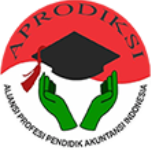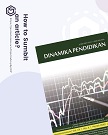Contextual Video: Critical Thinking-Based Learning Media in The Implementation of Curriculum 2013
(1) Universitas Sebelas Maret (UNS), Surakarta, Indonesia
Abstract
This research aims to know the development of critical thinking-based contextual video media on the subject matter of economic issues and how to overcome it, and to find out the feasibility of critical thinking-based contextual video media and student's response towards the critical thinking-based contextual video media. The implementation of curriculum 2013 cannot be separated from the government's expectation that learners have good soft skills.The desired skills are 21st century skills known as 4C: creative, critical thinking, communicative and collaborative. These skills emphasize the soft skills implemented in daily life, learners understand the importance of these skills. The existence of contextual video helps to simplify the process; learners are brought into real life. The learning is more implementative. Critical thinking is the basis of video, the video making process is made in such a way so that the learners understand the material by temselves from analyzing every plot of video. The video material is about economic issues and how to overcome them. This research was Research and Development (R&D). The development cycle used Thiagarajan, Semmel and Semmel’s model or 4-P model that are defining, designing, developing, and deploying. However, this study was only up to the stage of development. The place of this study was in Vocational High School Muhammadiyah 1 Babat. The result of the research stated that based on media feasibility test from the material expert, it is very feasible with the percentage of 80,44% and the media learning expert assessed very well with the percentage of 88,82%. And the result of class X students’ response to media is very good with the percentage 83, 64%. So it is concluded that contentxtual video media is feasible to be used as a learning media.
Keywords
Full Text:
PDFReferences
Abu, M. S. and Abidin, Z. Z. (2013). Improving the Levels of Geometric Thinking of Secondary School Students Using Geometry Learning Video based on Van Hiele Theory. International Journal of Evaluation and Research in Education (IJERE), 2, 1: 16-22.
Ah-Nam, L and Osman, K. (2017). Developing 21st Century Skills through a Constructivist-Constructionist Learning Environment. Jurnal K-12 STEM Education, 3, 2: 205-216.
Annisalsabila. (2014). isi alinea 1 - 4 Pembukaan UUD 1945.www.brainly.co.id. Downloaded on December 16th, 2017. At 06.29 Western Indonesia Standard Time
Anwar. (2006). Pendidikan Kecakapan Hidup. Alfabeta. Bandung.
Asrori, A. (2016). Implementation of Competency and Conservation Based Curriculum to Improve Graduates' Quality to Be Competence and Conservation-Minded. Dinamika Pendidikan Unnes, 11(1), 34-42.
Ball, A., Joyce, H. D., and Anderson-Butcher, D. (2016). Exploring 21st Century Skills and Learning Environments for Middle School Youth. International Journal of School Social Work, 1, 1: 1-25.
Bashith, A. dan Amin, S. (2017). The Effect of Problem Based Learning on EFL Students’ Critical Thinking Skill and Learning Outcome. Al-Ta’lim Journal, 24, 2: 93-102.
Baswedan, A. (2014). VIP-Kan guru guru kita. http://edukasi.kompas.com/read/-2014/11/27/19532781/VIP-kan.Guru-guru.Kita. Downloaded on December 16th 2017. At 06.27 Western Indonesia Standard Time
Bharvad, A. J. (2010). Curriculum evaluation. International Research Journal, 1(12), 72-74.
Borg, W. R. and Gall, M. D. (2007). Education Research an Introduction. Longman. New York.
Busyaeri, A., Udin, T., and Zaenudin, A. (2016). Pengaruh Penggunaan Video Pembelajaran Terhadap Peningkatan Hasil Belajar Mapel IPA di MIN Kroya Cirebon. Al Ibtida, 3, 1: 116-137.
Daryanto. (2011). Ilmu komunikasi 1. Sarana Tutorial Nurani Sejahtera. Bandung.
Febriyanti, E. (2014). Penggunaan Media Video Terhadap Aktivitas dan Hasil Belajar Siswa. www.digilib.unila.ac.id. Downloaded on April 9th 2017, At 21.38 Western Indonesia Standard Time
Fishman, B., Konstantopoulos, S., Kubitskey, B. W., Vath, R., Park, G., Johnson, H., & Edelson, D. C. (2013). Comparing the impact of online and face-to-face professional development in the context of curriculum implementation. Journal of teacher education, 64(5), 426-438.
Fraser, S. P., & Bosanquet, A. M. (2006). The curriculum? That’s just a unit outline, isn’t it?. Studies in Higher Education, 31(03), 269-284.
Fullan, M., Hopkins, D., & Spillane, J. (2008). Curriculum implementation and sustainability. In The Sage handbook of curriculum and instruction. SAGE Publications Inc..
Hasyim, M. (2011). Pencapaian Standar Kompetensi Dalam Kurikulum 2006 Pada Mata Pelajaran Ekonomi Melului Pendekatan Kontekstual (Contextual Teaching And Learning) Di SMA Negeri 11 Semarang. Dinamika Pendidikan, 6(1), 45-61.
Hicks, O. (2007, July). Curriculum in higher education in Australia–Hello. In Enhancing Higher Education, Theory and Scholarship, Proceedings of the 30th HERDSA Annual Conference [CD-ROM] (Vol. 8, No. 11).
http://gerbangkurikulum.psma.kemdikbud.go.id. Accessed in Thursday September 7th 2017, At 09.35 Western Indonesia Standard Time.
Imam, M. (2016). Developing the 21st-Century Social Studies Skills Through Technology Integration. Turkish Online Journal of Distance Education, 17, 1: 16-30.
Jacobsen, D. A., Eggen, P. D., and Kauchak, D. P. (2002). Methods for teaching: Promoting student learning. Prentice Hall.
Kentli, F. D. (2009). Comparison of hidden curriculum theories. European Journal of Educational Studies, 1(2), 83-88.
Lloyd, M and Bahr, N. (2010). Thinking Critically about Critical Thinking in Higher Education. International Journal for the Scholarship of Teaching and Learning, 4, 2: 1-16.
Murti, B. (2010). Berpikir Kritis (Critical Thinking). Jurnal Kedokteran, 6, 1: 1–5.
Pemerintah Republik Indonesia. (2014). Peraturan Menteri Pendidikan dan Kebudayaan Republik Indonesia Nomor 103 Tahun 2014 Tentang Pembelajaran pada Pendidikan Dasar dan Pendidikan Menengah. Kepala Biro Hukum dan Organisasi Kementerian Pendidikan dan Kebudayaan. Jakarta.
Pratiwi, D. (2012). Pengaruh Perbedaan Karakteristik Multimedia Terhadap Kemampuan Berpikir Kritis Siswa pada Konsep Sistem Pertahanan Tubuh. Bioedukasi, 3, 1: 1-13.
Sadiman, A. S., et. al. (2011). Media Pendidikan, Pengertian, Pengembangan, dan Pemanfaatannya. PT. Raja Grafindo Persada. Jakarta.
Sadiman, A. S., et. al. (2009). Media Pendidikan, Pengertian, Pengembangan, dan Pemanfaatannya. Rajawali Pers. Jakarta
Sugiyono. (2013). Metode Penelitian Kuantitatif, Kualitatif, dan R & D. Penerbit Alfabeta. Bandung.
Taylor, T. (2014). Guidelines for supporting placement learning via video communications technologies. Higher Education, Skills and Work-based Learning,4: 66-83.
Trianto. (2011). Model-model pembelajaran inovatif berorientasi konstruktivitis. Prestasi Pustaka. Jakarta.
Widiyanto, W. (2010). Strategi Pengembangan Kurikulum Berbasis Kompetensi DUDI untuk SMK. Dinamika Pendidikan, 5(2).
Windriyas, W. N. (2014). Analisis Pencapaian Kompetensi Peserta Didik SMK Kelas X Diklat Keahlian Bisnis dan Manajemen dalam Pengembangan Kurikulum 2013 Di Smk Widya Praja Ungaran. Economic Education Analysis Journal, 3(3).
Refbacks
- There are currently no refbacks.

This work is licensed under a Creative Commons Attribution 4.0 International License.

.png)

.png)





